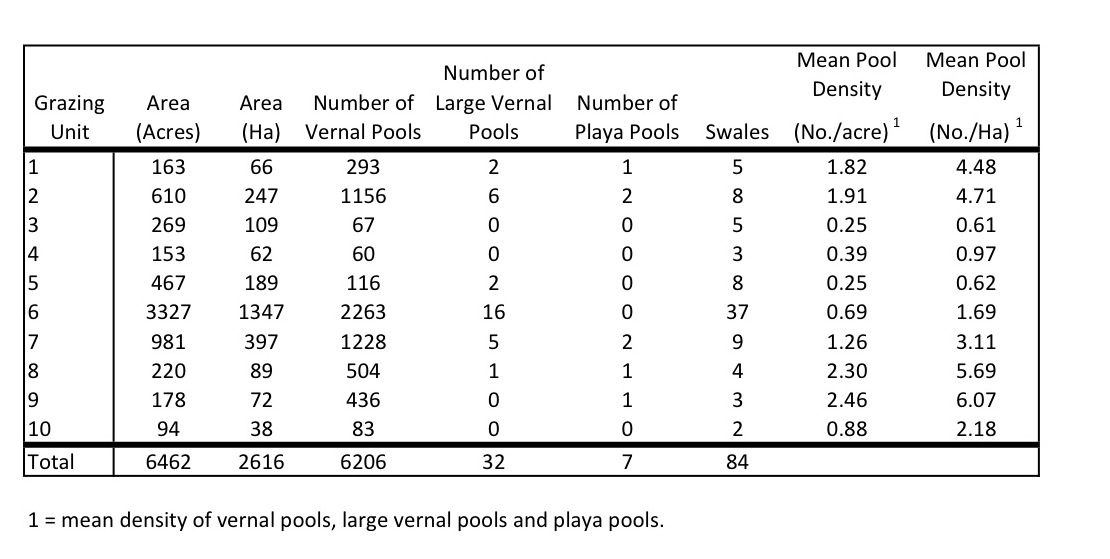Although we do not know the exact number of vernal pools in the Reserve, we've always known there are a lot of them. Determining exactly how many pools are in the reserve will require aerial imagery taken in late winter or spring, the time period when pools are filled with water. Graduate students in the MESA lab on campus are poised to help with this task. They've been testing their UAVs (unmanned aerial vehicles) for over a year and a half. When they rains come, they'll be ready.
In the meantime we needed a rough estimate of the number and distribution of vernal pools. This task went to John Cronin, Environmental Engineering major and the reserve intern. Using existing maps, various software applications, and an organized approach, John was able to make an estimate of the number of pools in the Reserve. His total: 6245! This total includes small and large pools (those over 1,300 sq meters in area), as well as the huge playa pools. Armed with this newest data set, faculty and graduate students will be able to plan new studies aimed at a better understanding of how vernal pool density and distribution relates to soil conditions, soil age, and topography. On a practical level, these data will help us do a better job of managing the cattle grazing. Cattle grazing keeps our vernal pools healthy. With this new knowledge we're in a better position to develop optimal grazing patterns. Next year we'll refine John's estimate with methods that are reproducable and accurate over the long term.



